SUMMARY
This is AI generated summarization, which may have errors. For context, always refer to the full article.
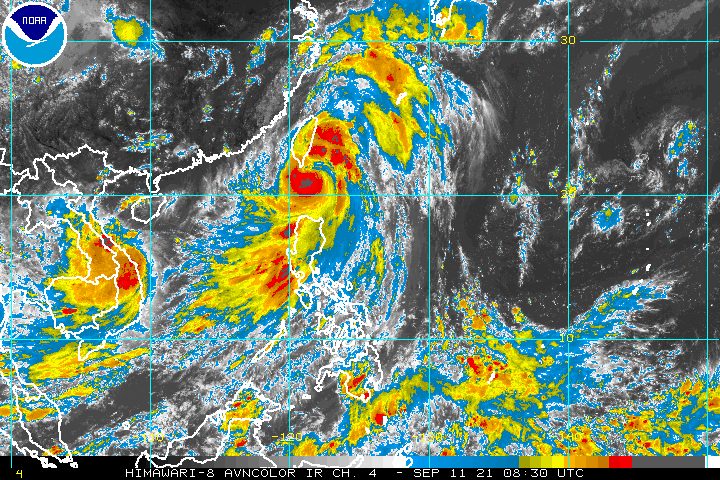
Typhoon Kiko (Chanthu) continued to weaken while moving over the coastal waters of Itbayat, Batanes, late Saturday afternoon, September 11.
Kiko’s maximum sustained winds decreased to 185 kilometers per hour while its gustiness went down to 230 km/h, said the Philippine Atmospheric, Geophysical, and Astronomical Services Administration (PAGASA) in its 5 pm bulletin on Saturday.
At its peak, Kiko had maximum sustained winds of 215 km/h – almost a super typhoon. A super typhoon has maximum sustained winds exceeding 220 km/h. (READ: FAST FACTS: Tropical cyclones, rainfall advisories)
Kiko earlier made landfall in Ivana, Batanes, at 8:30 am on Saturday.
Signal Nos. 1 to 4 remain raised as of 5 pm in Batanes and Babuyan Islands.
Signal No. 4 (very destructive typhoon-force winds)
- northern part of Batanes (Itbayat)
Signal No. 3 (destructive typhoon-force winds)
- rest of Batanes
Signal No. 2 (damaging gale-force to storm-force winds)
- northeastern part of Babuyan Islands (Babuyan Island)
Signal No. 1 (strong winds)
- rest of Babuyan Islands
Kiko also continues to trigger rain in parts of Northern Luzon, so residents must remain on alert for floods and landslides.
Heavy to intense rain, with at times torrential rain
- Batanes
Moderate to heavy rain, with at times intense rain
- Babuyan Islands
- northern part of Cagayan
- Ilocos Norte
- Ilocos Sur
- Abra
- Apayao
- Kalinga
- Benguet
PAGASA warned that life-threatening storm surges 1 to 2 meters high may occur within 24 hours.
“Rising seawater along with the high waves from the shoreline moving inland may cause flooding in the low-lying coastal localities of Batanes,” the state weather bureau said.
Sea travel remains dangerous in areas still feeling the impact of the typhoon.
Rough to phenomenal seas (waves 2.5 to 15 meters high)
Travel risky for all vessels, mariners advised to remain in port
- seaboards of areas under tropical cyclone wind signals
Moderate to rough seas (waves 1.2 to 3.5 meters high)
Travel risky for small vessels, mariners advised to avoid navigation
- eastern seaboard of Central Luzon
PAGASA expects Kiko to keep moving over Itbayat’s coastal waters within the next three hours, or until early Saturday evening.
Afterwards, it may turn north northeast while moving over the sea east of Taiwan, then generally north for the rest of the forecast period. Taiwan is still within the Philippine Area of Responsibility (PAR).
Kiko is also likely to weaken further as it interacts with Taiwan’s rugged terrain.
The typhoon is expected to leave PAR on Sunday evening, September 12.
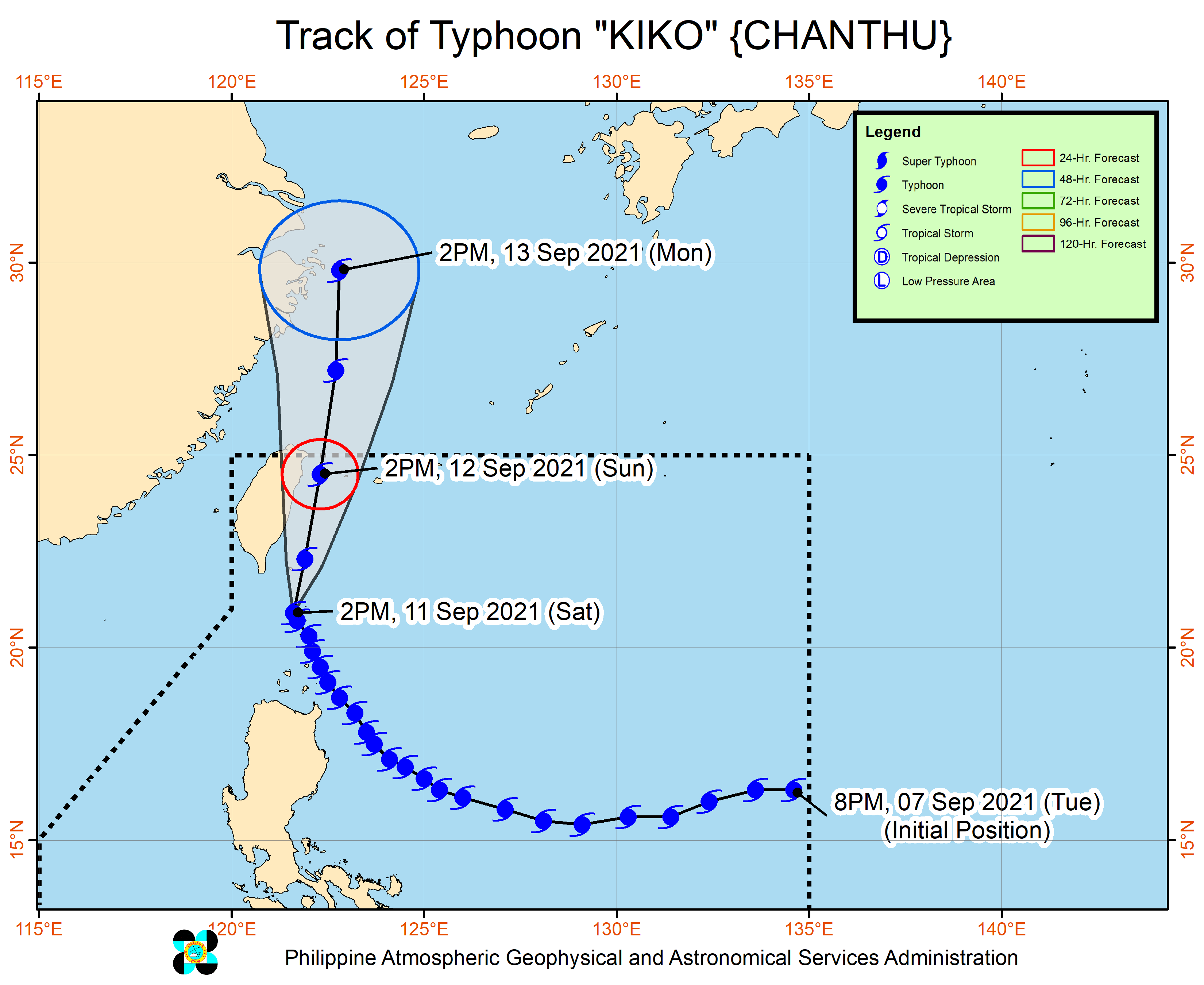
Other areas in Luzon are not affected by Kiko, but by the southwest monsoon or hanging habagat, which has been causing a rainy Saturday. The typhoon is enhancing the southwest monsoon.
This is PAGASA’s rainfall forecast for the enhanced southwest monsoon as of 4 pm on Saturday, covering the next 24 hours:
Monsoon rain
Heavy to at times intense
- Ilocos Region
- Cordillera Administrative Region
- Central Luzon
- rest of Cagayan Valley
Scattered rain showers and thunderstorms
Thunderstorms may be severe
- Metro Manila
- Calabarzon
- Palawan
- Occidental Mindoro
- Oriental Mindoro
Elsewhere in Luzon, there may be isolated rain showers and thunderstorms, too.
Affected areas must watch out for possible flash floods or landslides.

Kiko is the Philippines’ 11th tropical cyclone for 2021.
An average of 20 tropical cyclones form within or enter PAR each year. (READ: LIST: PAGASA’s names for tropical cyclones in 2021)
For the next six months, these are PAGASA’s estimates for the number of tropical cyclones inside PAR:
2021
- September – 2 or 3
- October – 2 or 3
- November – 2 or 3
- December – 1 or 2
2022
- January – 0 or 1
- February – 0 or 1
– Rappler.com
Add a comment
How does this make you feel?




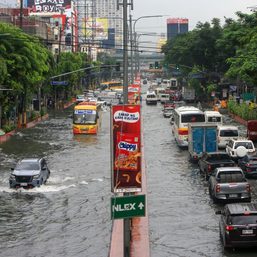
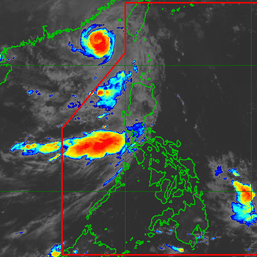
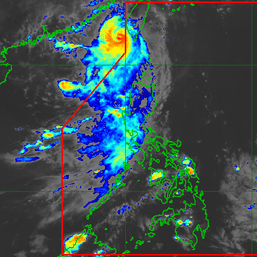
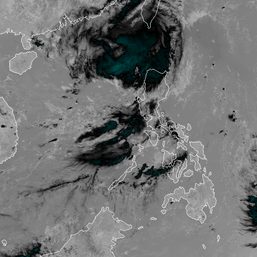
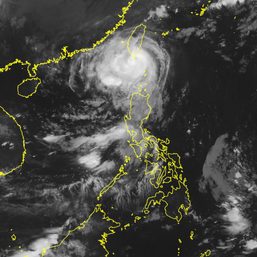
There are no comments yet. Add your comment to start the conversation.